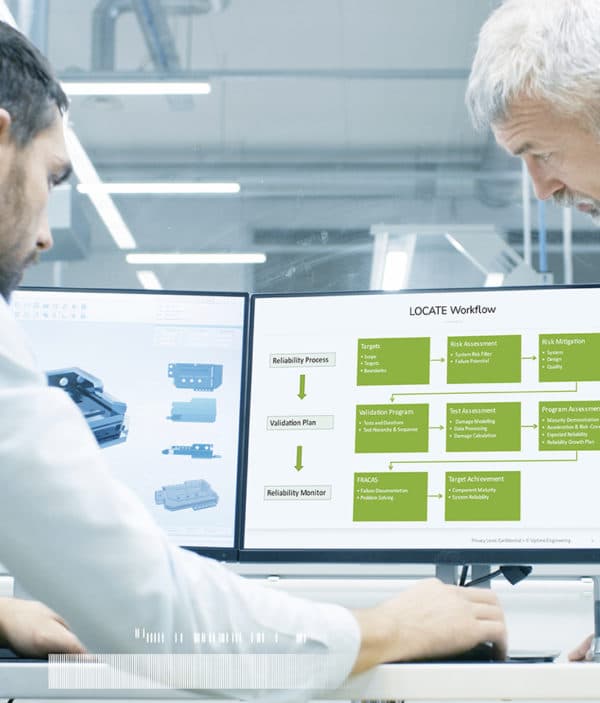Reliable products function in all use cases over a long period of time, without causing problems. Technically speaking, they prove themselves in reality against numerous instances of damaging operational loads and influencing factors. This requires comprehensive validation that identifies and eliminates all risks of downtime. This can be achieved if the strengths of all diverse disciplines are coordinated.



Reliability is one of the outstanding product characteristics in marketplace competition. It is also eminently important in terms of profitability since warranty costs represent a permanent risk to returns. The proof of reliability is elaborate because it has to cover all product variants under all conditions of use. This is necessary against downtime risks until the product’s end-of-life. The proof is therefore incomplete for many products using current practices. At the same time, we know from field data that the real reliability of many products is much higher than the proven level. It is therefore obviously possible to achieve very high levels of product reliability with limited resources. How can this be achieved?
Goal attainment is not only endangered by technical risks. Product downtimes also occur as a result of a lack of quality, communication problems in the supply chain, or due to poor maintainability. These risks must therefore be included in the goal determination. This in turn changes the validation strategy since these risks are not necessarily addressed by classic endurance tests but by accompanying measures by diverse expert disciplines. Therefore, it is crucial for maximum product reliability that these activities are methodically integrated into the validation process.
Using Uptime LOCATE, each responsible expert discipline is deployed to eliminate organisational, temporal, and communicative risks and to reduce the burden on the development. The effect-mechanisms behind the technical risks are investigated in detail and processed on all levels of integration with combined methods from test, simulation, and quality assurance. This provides early feedback for the design review and high levels of maturity for endurance runs without downtimes. All contributions are optimised using physics of damage models and statistics. This enables the expected reliability to be maximised.
Uptime Engineering has supported Siemens Mobility in of our largest metro projects, in which the customer had introduced challenging reliability values as acceptance criteria. Forming part of the project-specific Reliability Assurance Programme, Uptime Engineering contributed with physics of failure methods and broad expertise in development, allowing Siemens Mobility to significantly reduce the risk relating to the reliability acceptance criteria.

Uptime LOCATE creates a collaborative validation landscape with clear responsibilities. Uptime LOCATE combines the activities of a range of disciplines. Methods and tests are consistently and quantitively evaluated from the component level up to the entire system. This results in a validation landscape that is structured with clear allocation of tasks, sequence, and responsibility.

Uptime LOCATE uses its knowledge base to provide optimum validation of product reliability. Uptime LOCATE delivers KPIs for the evaluation of activities: Risk reduction, test sequencing, risk coverage, expected reliability. The available resources are employed in such a way that the highest possible product reliability is attained for the company.
Reusable insights, methods, and models are forked in the knowledge base. This forms the foundation of a learning organisation.

Uptime LOCATE delivers a solid basis for difficult decisions.
Uptime LOCATE evaluates which measures provide which contribution towards validation and at what cost. It can then be calculated whether the desired goals are on time, whether they can really be attained, and what costs would be the consequence of missing the target. After any changes, Uptime LOCATE determines the direct and indirect risks and hence scenarios illuminating the way back to the target path.

You are currently viewing a placeholder content from Facebook. To access the actual content, click the button below. Please note that doing so will share data with third-party providers.
More Information